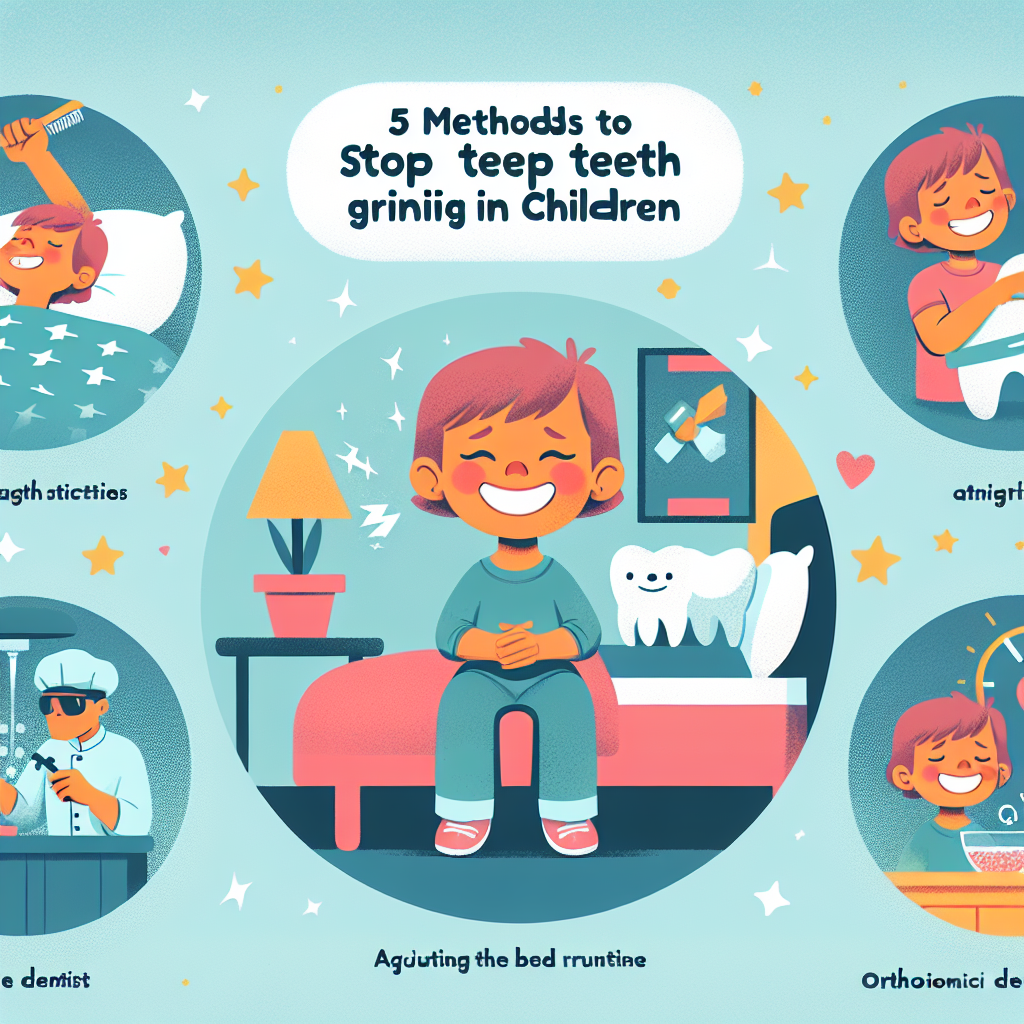Child Development: A Complete Guide to the Essential Stages
5 Methods to Stop Teeth Grinding in Children
Intro
Teeth grinding, also known as bruxism, is a common problem seen in children, especially at night. Affecting a significant percentage of the pediatric population, bruxism can not only lead to pain and discomfort, but can also have long-term consequences for your little one's dental health. However, there are effective methods by which parents can help reduce or eliminate this unwanted habit.
Why Do Children Grind Their Teeth?
Before we look at solutions, it is important to understand why bruxism occurs in children. Although the exact causes can vary, specialists often point to stress factors, the reaction to a new onset of pain such as that of a tooth eruption, and diet as the main sources that contribute to teeth grinding. It can also be a jaw or teeth alignment problem.
Methods of Management of Grinding
Once we understand the potential causes, we can explore the various methods of stopping bruxism. Here are five of the most effective strategies:
1. Relaxation techniques
Encouraging your child to practice relaxation techniques before bed can reduce the incidence of teeth grinding. Hand them a storybook or create a calm evening routine to help them relax. Some parents resort to meditation techniques and breathing exercises, which have been shown to be effective in some cases.
2. Dental Protection
If bruxism persists, see a dentist to get a custom mouth guard. This protects the baby's teeth during the night and can help reduce grinding. Braces are generally comfortable and children can quickly get used to wearing them.
3. Adjustments in Food
Avoiding foods and drinks that can contribute to bruxism is crucial. Limit the consumption of sweets and caffeinated drinks, especially in the second part of the day. Also, make sure your child eats a balanced diet that includes enough minerals and vitamins for healthy teeth.
4. Advice from Specialists
If bruxism is severe or persistent, consultation with a specialist may be necessary. A pedodontist or orthodontist can offer specialist advice and treatment to stop your child's teeth grinding.
5. Monitoring and Adaptation
Keep a log of your child's teeth grinding to watch for any patterns or potential triggers. In this way, you can adapt the management methods according to the particularities and individual needs of your child.
Body Content
The Impact of Grinding on Dental Health
Persistent bruxism can have adverse effects on a child's dental health, including tooth wear, jaw pain, and even changes in facial structure. For this reason it is essential that we take immediate action to reduce or stop this behavior.
Evaluation of Causes and Consequences
To effectively address bruxism, it is necessary to carefully evaluate its causes and consequences. In some cases, teeth grinding can be a sign of underlying problems, such as anxiety or stress, that require different therapeutic approaches.
Resources and Support for Parents
As parents, the task of managing bruxism can be difficult and frustrating at times. This is where support and information is needed from dental and pediatric health professionals, but also from educational resources and communities of parents who are facing the same problem.
Conclusion
Teeth grinding in children is not only annoying, but it can also have long-term effects on their dental health. However, by adopting appropriate methods of relaxation, protection, dietary adjustment, specialist consultation and careful monitoring, parents can take significant steps in reducing and eliminating bruxism. If you are facing this problem, remember that you are not alone and that there are resources and help available. Being informed and proactive is key in effectively managing bruxism in children.
Finally, feel free to check out our parenting resources section or subscribe to our newsletter for more information and support related to your child's health and development. together, we can ensure that our little ones grow up healthy and happy.














































































































































